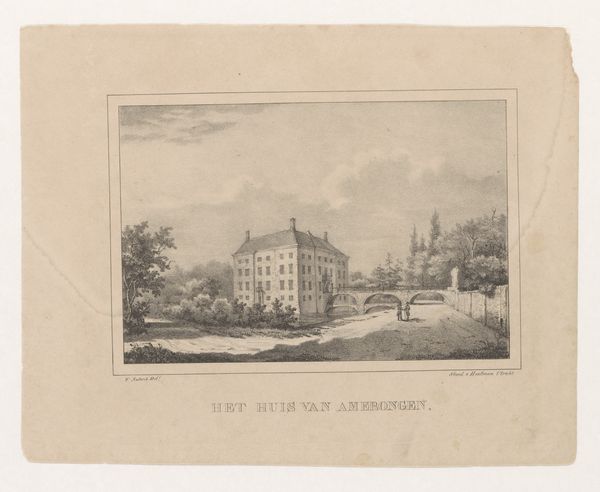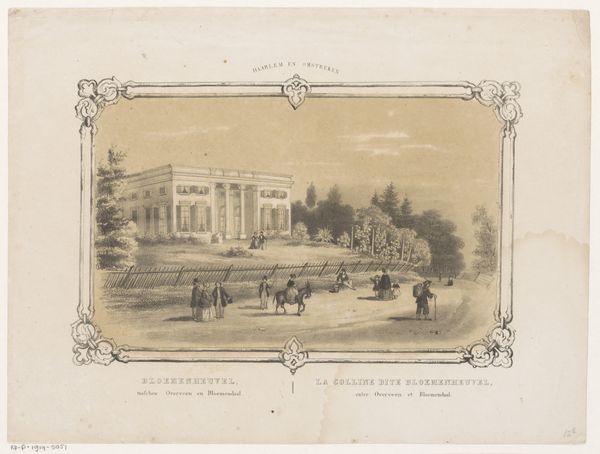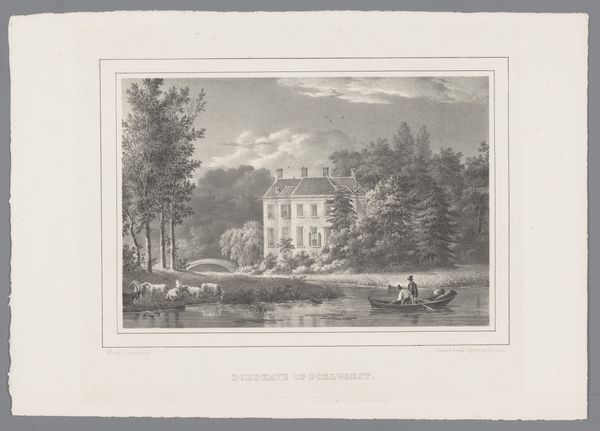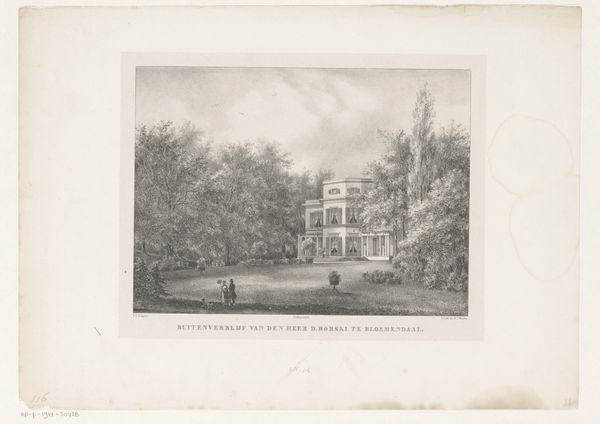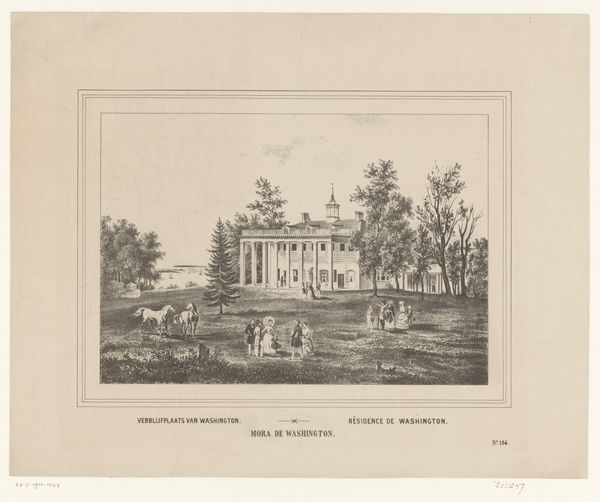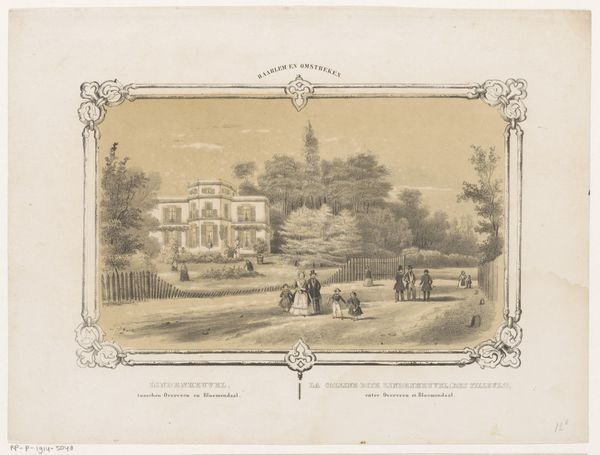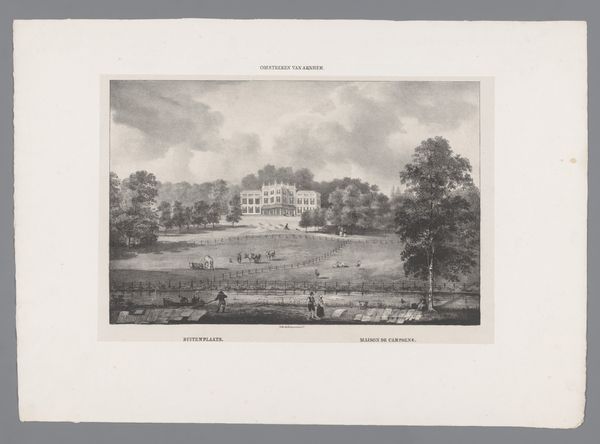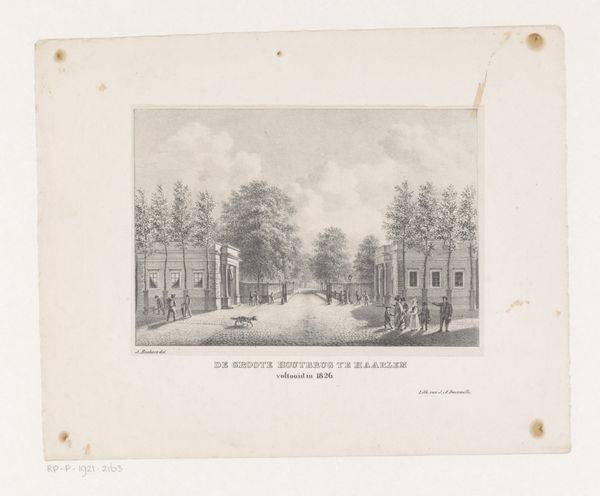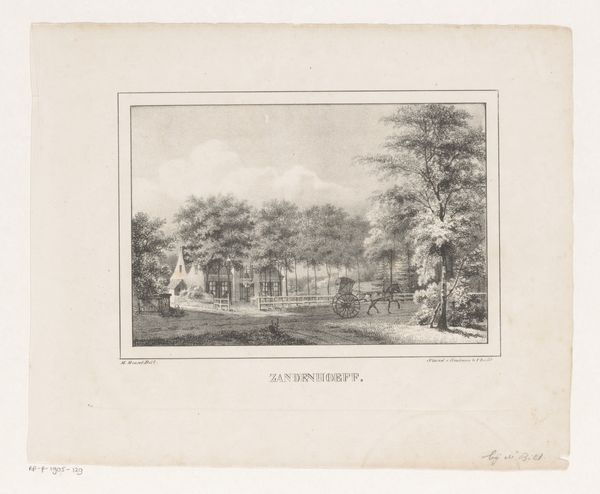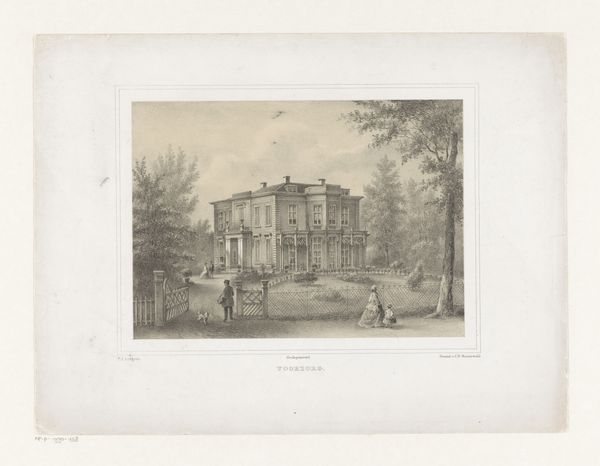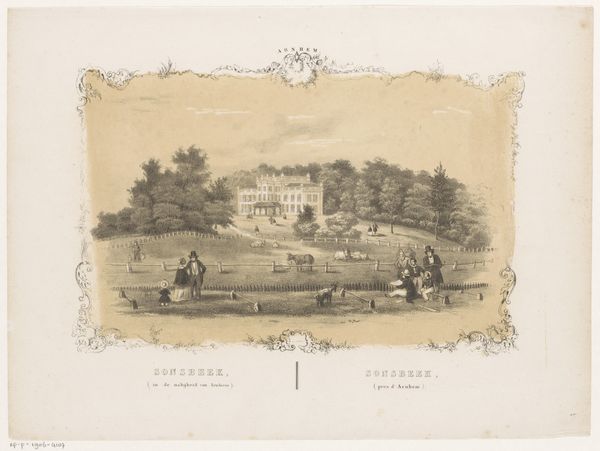
print, engraving
#
neoclacissism
# print
#
landscape
#
cityscape
#
academic-art
#
engraving
Dimensions: height 230 mm, width 300 mm
Copyright: Rijks Museum: Open Domain
Curator: So, this engraving, “Gezicht op buitenplaats De Oorsprong,” by Michel Mourot, circa 1829…what strikes you first about it? Editor: The calmness. The perfectly manicured lawn. It’s so serene; almost too serene, like a staged painting. The architectural style of the country house also evokes an interesting contrast with its natural environment. How do you interpret that? Curator: That contrast, as you call it, is fascinating, isn't it? Consider the era. Neoclassicism adored order, reason, control - attempting to govern even nature itself. Do you see how the figures are placed with intention? This isn’t a snapshot of everyday life; it’s a carefully constructed representation. There is this subtle sense of optimism in that era, wouldn't you say? What is that single tower we see in the far left? Do you think its symbolism adds another dimension to this work? Editor: I agree, the characters look posed. Perhaps the tower symbolises something greater, some ambition beyond that manicured lawn! What would the creation of something like this communicate to other wealthy families at the time, or the culture surrounding it? Curator: Ah, the game of appearances! Ownership of land, especially when immortalized in art, was everything! To present an image of harmony and control broadcasted power, education, and good taste, as opposed to displaying one's wealth and riches more evidently. It became a new trend! In some ways, it’s almost funny, how history echoes, isn't it? Editor: It’s all so strategic. Thank you, your thoughts truly changed the way I see this print now. Curator: And your observations nudged me to remember just how constructed these idyllic scenes really are. Always a learning experience!
Comments
No comments
Be the first to comment and join the conversation on the ultimate creative platform.
